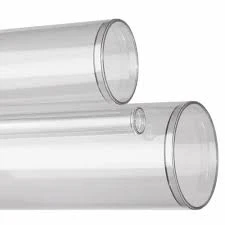Sep . 28, 2024 17:34 Back to list
Applications and Benefits of Polyethylene Welding Rods in Industrial Projects
Understanding Polyethylene Welding Rods Applications, Benefits, and Techniques
Polyethylene (PE) welding rods are indispensable tools in the field of plastic welding, utilized primarily for joining polyethylene materials in a wide array of industrial applications. This thermoplastic is known for its durability, chemical resistance, and versatility, making it a popular choice in various sectors, from construction to automotive and even in aquaculture.
What are Polyethylene Welding Rods?
Polyethylene welding rods are cylindrical rods made from polyethylene, specifically designed to be used in conjunction with welding equipment for the purpose of fusing plastic components. These rods serve as a filler material that gets melted during the welding process, allowing it to blend seamlessly with the base materials that need to be joined. Available in various diameters, colors, and grades, polyethylene welding rods can cater to different applications and specific project requirements.
Applications of Polyethylene Welding Rods
1. Agricultural Uses In the agricultural sector, polyethylene is frequently employed for making various products such as storage tanks, irrigation systems, and geomembranes for reservoirs. Polyethylene welding rods allow for the seamless joining of these components, ensuring minimal leakage and enhanced structural integrity.
2. Aquaculture The aquaculture industry often utilizes polyethylene materials for ponds and tanks. The welding rods are crucial for constructing these structures, ensuring they can withstand the aquatic environment while providing a safe habitat for aquatic life.
3. Chemical Storage With polyethylene's resistance to many chemicals, it's often a material of choice for storage tanks. Polyethylene welding rods help maintain the integrity of these tanks by ensuring all fittings and junctions are securely bonded and leak-free.
4. Construction and Infrastructure Polyethylene welding rods are utilized in several construction applications, particularly for waterproof membranes and geotextiles. The ability to create strong, lasting bonds between polyethylene sheets or components is critical for long-term durability in infrastructure projects.
Benefits of Using Polyethylene Welding Rods
polyethylene welding rod

- Durability Polyethylene is highly resistant to impact and does not become brittle over time
. This makes welding rods made from this material particularly advantageous for applications in harsh environments.- Chemical Resistance Polyethylene welding rods exhibit excellent resistance to various chemicals, making them suitable for projects that involve exposure to corrosive substances.
- Ease of Use Welding polyethylene with the right rods can be straightforward, provided the welder is equipped with the necessary skills and tools. The process typically involves heating the base materials and welding rods to a point where they melt and bond together.
- Cost-Effectiveness Since polyethylene is relatively inexpensive and has good longevity, using polyethylene welding rods can be a cost-effective solution in the long run. The maintenance costs are also low, given the material's resistance to wear and tear.
Techniques for Welding with Polyethylene Rods
1. Extrusion Welding This method involves feeding the welding rod through an extrusion gun while applying heat to the joint between the pieces to be bonded. Extrusion welding is particularly effective for large surfaces or joints where a significant volume of filler material is required.
2. Hot Air Welding In this technique, a hot air tool is used to heat the edges of the polyethylene being joined. The welding rod is then applied as the melted edges are pressed together. Hot air welding is suitable for smaller repairs and detailing work.
3. Butt Welding In butt welding, the ends of two polyethylene sheets are aligned and heated simultaneously until they become pliable. The welding rod may not be necessary, as the two pieces meld directly together, creating a strong bond.
Conclusion
Polyethylene welding rods are an essential component for anyone working with polyethylene materials across various industries. Their versatility, combined with the wide range of applications, makes them invaluable for creating durable, leak-proof joints. Understanding the advantages and techniques of polyethylene welding can significantly enhance the quality and longevity of projects in which polyethylene plays a crucial role. As industries continue to evolve, the significance of polyethylene and its welding techniques is sure to grow, reinforcing its position as a leading material choice in modern engineering and construction.
-
PP U-channel: Chemical-Resistant, Lightweight & Durable
NewsAug.10,2025
-
Transparent PVC Pipe: Clear Flexible Tubing for Fluids
NewsAug.09,2025
-
Durable PP Rigid Sheet: Versatile & High-Quality Plastic Panels
NewsAug.08,2025
-
Premium Glossy PP Rigid Sheet – Durable & Versatile
NewsAug.07,2025
-
High-Quality HDPE Sheet | Durable Plastic Panels
NewsAug.06,2025
-
High-Precision PVC Rigid Sheets for Vacuum Forming | AI-Optimized
NewsAug.05,2025

